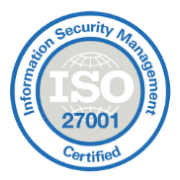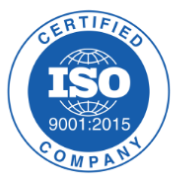Investing in a Learning Management System (LMS) is a strategic decision for any enterprise aiming to enhance employee training, improve productivity, and drive organizational growth. However, with significant investments involved, it’s crucial to measure the return on investment (ROI) to ensure the LMS delivers tangible value. Calculating LMS ROI not only justifies the expenditure but also helps optimize the system for better outcomes. In this blog, we’ll walk you through the steps to calculate LMS ROI effectively, ensuring your investment aligns with your business goals.
Why Calculating LMS ROI Matters
Before diving into the calculations, it’s essential to understand why measuring LMS ROI is critical. An LMS is more than just a platform for delivering training; it’s a tool that impacts employee performance, compliance, and overall business efficiency. By calculating LMS ROI, you can:
- Justify the Investment: Demonstrate the financial benefits of the LMS to stakeholders.
- Identify Areas for Improvement: Pinpoint inefficiencies and optimize the system for better results.
- Align with Business Goals: Ensure the LMS contributes to organizational objectives, such as increased productivity or reduced training costs.
For enterprises, calculating LMS ROI isn’t just about numbers—it’s about understanding the system’s impact on your workforce and bottom line.
Steps to Calculate LMS ROI
Calculating LMS ROI involves a combination of quantitative and qualitative metrics. Here’s a step-by-step guide to help you measure the ROI effectively:
1. Define Your Objectives and Metrics
The first step in calculating LMS ROI is to establish clear objectives. What do you aim to achieve with the LMS? Common goals include:
- Reducing training costs
- Improving employee performance
- Increasing compliance rates
- Enhancing employee retention
Once you’ve defined your objectives, identify the key performance indicators (KPIs) that align with them. For example, if your goal is to reduce training costs, track metrics like the cost per learner, time spent on training, and travel expenses saved.
2. Calculate the Total Cost of Ownership (TCO)
To calculate LMS ROI, you need to determine the total cost of ownership (TCO) of the LMS. This includes:
- Initial Costs: Licensing fees, setup costs, and customization expenses.
- Recurring Costs: Subscription fees, maintenance, and updates.
- Hidden Costs: Training for administrators, IT support, and content development.
By accounting for all these expenses, you’ll have a clear picture of the total investment in the LMS.
3. Measure the Benefits
Next, quantify the benefits your organization has gained from the LMS. These can be both tangible and intangible. Tangible benefits include:
- Cost Savings: Reduced training costs, travel expenses, and material costs.
- Increased Productivity: Improved employee performance leading to higher output.
- Compliance Savings: Avoided fines or penalties due to better compliance training.
Intangible benefits, such as improved employee satisfaction or enhanced brand reputation, are harder to measure but still contribute to the overall ROI.
4. Use the ROI Formula
Once you have the TCO and the total benefits, you can calculate the LMS ROI using the following formula:
**ROI =[(TotalBenefits−TotalCosts)/TotalCosts]x100∗∗[(TotalBenefits−TotalCosts)/TotalCosts]x100∗∗
For example, if your total benefits are 200,000andyourtotalcostsare200,000andyourtotalcostsare150,000, the ROI would be:
**ROI =
This means your LMS investment has yielded a 33.33% return.
5. Analyze and Optimize
Calculating LMS ROI isn’t a one-time task. Regularly analyze the results to identify trends and areas for improvement. For instance, if certain training modules aren’t delivering the expected results, consider revising the content or delivery method. Continuous optimization ensures your LMS remains a valuable asset.
Key Factors Influencing LMS ROI
Several factors can impact the ROI of your LMS. Understanding these can help you maximize the value of your investment:
User Adoption: High adoption rates lead to better utilization and higher ROI.
Content Quality: Engaging and relevant content improves learning outcomes.
Integration Capabilities: Seamless integration with other systems enhances efficiency.
Scalability: An LMS that grows with your organization ensures long-term ROI.
By focusing on these factors, you can enhance the effectiveness of your LMS and achieve a higher ROI.
Conclusion
Calculating LMS ROI is a critical step in ensuring your investment delivers measurable value. By defining clear objectives, measuring costs and benefits, and continuously optimizing the system, you can maximize the ROI of your LMS. Remember, the true value of an LMS goes beyond financial returns—it’s about empowering your workforce, driving productivity, and achieving long-term business success.
For enterprises, understanding how to calculate LMS ROI is not just a financial exercise; it’s a strategic imperative. By following the steps outlined in this guide, you can make data-driven decisions that enhance the effectiveness of your LMS and contribute to your organization’s growth.
Ready to take your LMS investment to the next level? Start calculating your LMS ROI today and unlock the full potential of your training initiatives.

























